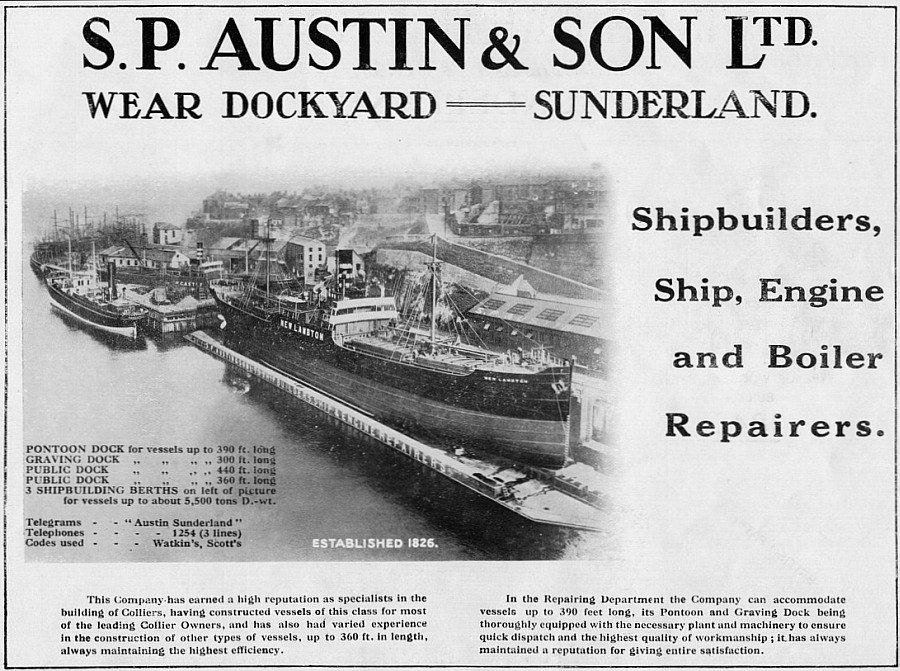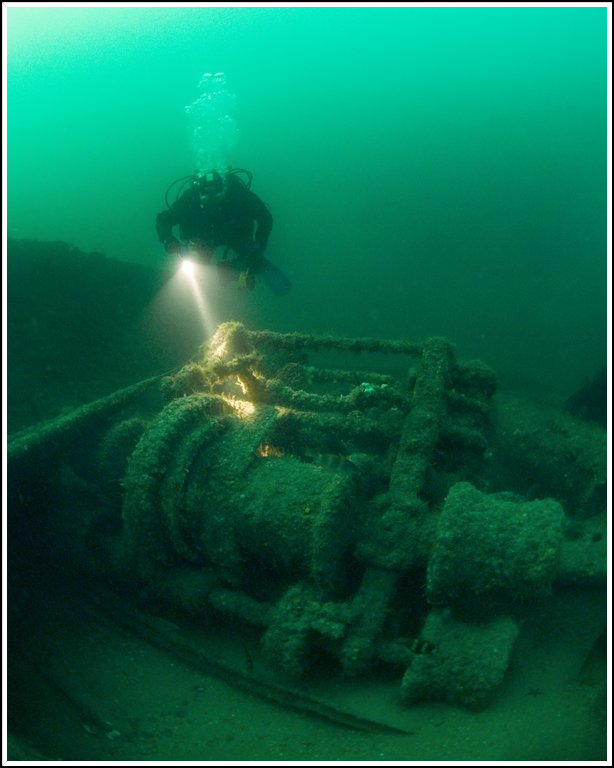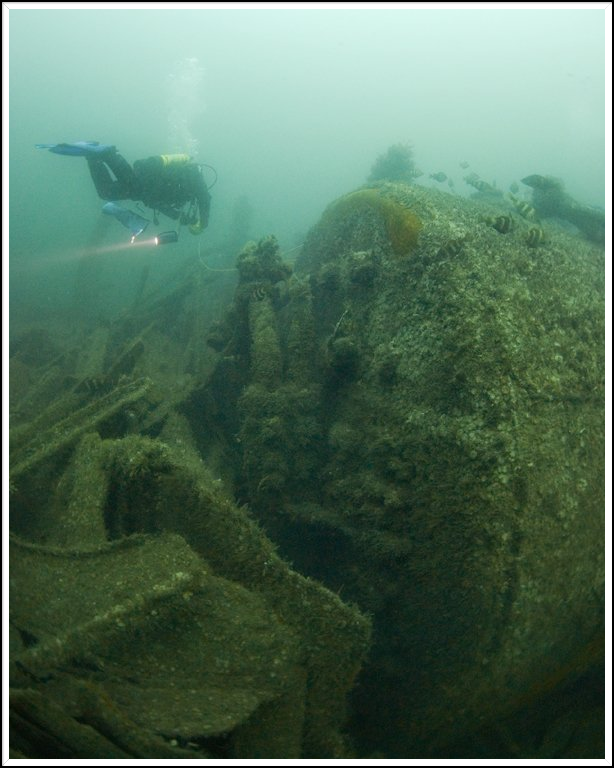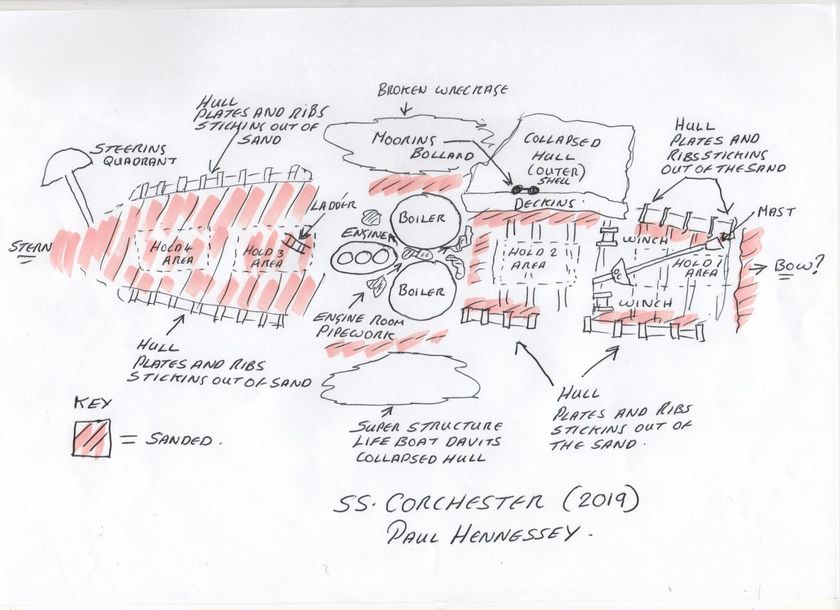Double acting triple expansion steam engine.
High pressure steam (red) passes from the boiler and goes through 3 stages, HP cylinder (red), IP cylinder (orange), LP cylinder (blue). From here the steam from the LP cylinder goes to the condenser where it is returned to its former state, ie water and is returned to the boiler for re-use.
Note .... As with the engine illustrated, the Corchester's engine is fitted with Stephenson's link motion valve gear. These are the workings to the left of each con rod. Two eccentric sheaves are fitted to the crank shaft, these are attached to eccentric rods and then the valve rods which in turn open and shut the slide valve for each cylinder.
Whilst the Stephenson's valve gear arrangement was not exclusive to the Corchester's engine design, it was the most widely favoured amongst engine builders of the time.











